ADDICTION
ALCOHOL DEPENDENCE
QUIT SMOKING
ALLERGY
ANTI FUNGAL
FUNGAL INFECTION
FUNGAL NAIL INFECTIONS
ANTI-REJECTION DRUGS
ANTI WORM
ANTIBIOTIC
BACTERIAL INFECTIONS
ARTHRITIS
GOUT
OSTEOARTHRITIS
RHEUMATOID ARTHRITIS
BLOOD
LOW PLATELET COUNT
THROMBOPHLEBITIS
VARICOSE VEINS
COLON
ANAL FISSURE
PILES
ULCERATIVE COLITIS
DIABETES CARE
DIABETES INSIPIDUS
DIABETES TYPE
DIABETIC FOOT ULCERS
GLUCOSE MONITOR
EYES/EAR CARE
DRY EYES
EYE CARE
EYE EXAMINATION
EYE INFECTION
EYE LASHES
EYE PAIN
GLAUCOMA
OCULAR HYPERTENSION
UVEITIS
FEVER CARE
MALARIA
RHEUMATIC FEVER
TYPHOID FEVER
GASTROINTESTINAL
ACIDITY
CONSTIPATION
CROHN'S DISEASE
DIARRHOEA
GALLBLADDER STONES
INTESTINAL ULCERS
IRRITABLE BOWEL SYNDROME
MOTION SICKNESS
NAUSEA
Soliact 10 mg (Solifenacin)
| Active Ingredient (Generic Name): | Solifenacin |
|---|---|
| Indication: | used in the treatment of Overactive bladder (OAB) symptoms |
| Manufacturer: | Cipla Limited |
| Packaging: | 15 tablets in one strip |
| Strength: | 10 mg |
From: $48.00
When taking Soliact 10 mg (Solifenacin), it works by blocking specific receptors to help with overactive bladder. This action relaxes bladder muscles, reducing the urge to urinate. Common side effects might include dry mouth, constipation, blurred vision, and dizziness. More severe effects could be difficulty urinating, severe stomach pain, or allergic reactions. It’s essential to follow prescribed usage, take it once daily with or without food, and not crush or break the pill. Understanding how it works and its potential benefits for bladder function is key to informed decision-making.
Start your journey with Soliact 10 mg by understanding its mechanism of action and potential side effects. Soliact 10 mg, containing Solifenacin, is a medication primarily used to treat overactive bladder. It works by blocking certain receptors in the bladder, which helps relax the bladder muscles, reducing the frequent urge to urinate and incontinence. This medication typically starts to show its effects within a few days of starting treatment.
However, like any medication, Soliact 10 mg may cause some side effects. Common side effects include dry mouth, constipation, blurred vision, and dizziness. It’s important to stay hydrated and practice good oral hygiene to manage these side effects effectively. In rare cases, more severe side effects such as difficulty urinating, severe stomach pain, or allergic reactions may occur. If you experience any concerning symptoms, seek medical help promptly.
Starting Soliact 10 mg can be a beneficial step in managing your overactive bladder symptoms, but it’s essential to be aware of its mechanism of action and potential side effects to use it safely and effectively.
Efficacy of Solifenacin
To assess the effectiveness of Solifenacin in managing overactive bladder symptoms, understanding its impact on bladder function and patient outcomes is essential. Solifenacin works by blocking specific receptors in the bladder, reducing muscle spasms, and increasing the bladder’s capacity to hold urine.
Clinical studies have shown that Solifenacin can notably decrease the frequency of urgency episodes, urinary incontinence episodes, and nocturia (nighttime urination). Patients taking Solifenacin have reported improvements in their quality of life, such as reduced urinary urgency, fewer bathroom trips, and decreased urinary leakage.
Additionally, Solifenacin has demonstrated efficacy in improving bladder emptying and reducing the sensation of incomplete emptying. Overall, Solifenacin has been shown to be an effective treatment option for individuals suffering from overactive bladder, providing relief from bothersome symptoms and enhancing their daily functioning.
Consult your healthcare provider to determine if Solifenacin is the right choice for managing your overactive bladder symptoms.
Why is this medication prescribed?
When prescribed by healthcare providers, Solifenacin is typically used to manage symptoms of overactive bladder. Overactive bladder is a condition characterized by a sudden, strong need to urinate that’s difficult to control. This medication works by relaxing the muscles in the bladder, reducing the frequency of urination, urgency, and leakage episodes. It helps to increase the bladder’s capacity to hold urine and decreases the need to rush to the bathroom.
Solifenacin is often recommended for individuals who experience symptoms such as frequent urination, urgency to urinate, and incontinence. By taking Solifenacin as prescribed, you may notice a significant improvement in your ability to control your bladder, leading to a better quality of life and reduced disruptions caused by overactive bladder symptoms. It’s important to follow your healthcare provider’s instructions carefully and to inform them of any side effects or concerns you may have while taking this medication.
How should this medicine be used?
To guarantee maximum effectiveness, take Solifenacin exactly as prescribed by your healthcare provider. Typically, this medication is taken once a day with or without food. Swallow the tablet whole with a full glass of water, and don’t crush, chew, or break it.
Follow the instructions on your prescription label carefully, and don’t take more or less of the medication than recommended. If you miss a dose, take it as soon as you remember, unless it’s close to the time of your next dose. In that case, skip the missed dose and continue with your regular dosing schedule. Don’t double up on doses to make up for a missed one.
It’s essential to keep track of your medication intake and report any concerns or side effects to your healthcare provider promptly. Remember that Solifenacin works best when taken consistently at the same time each day.
Other uses for this medicine
Exploring additional applications for Solifenacin beyond its primary use can provide valuable insights into its versatility and potential benefits. While Solifenacin is primarily prescribed for overactive bladder conditions, studies suggest its potential efficacy in managing bladder control issues in neurological conditions such as multiple sclerosis and spinal cord injuries. This medication’s antimuscarinic properties may help alleviate symptoms of urinary urgency, frequency, and incontinence in these patient populations.
Moreover, Solifenacin has shown promise in treating bladder pain syndrome/interstitial cystitis, a chronic condition characterized by bladder pain and urinary frequency. By targeting the bladder muscles and reducing involuntary contractions, Solifenacin may offer relief to individuals suffering from this debilitating condition.
Additionally, some research indicates that Solifenacin could be beneficial in managing nocturia, a condition where individuals wake up frequently during the night to urinate. By regulating bladder function and reducing nighttime urine production, Solifenacin may help improve sleep quality and overall well-being for those affected by nocturia. Consulting a healthcare provider is essential to determine the appropriateness of Solifenacin for these alternative uses.
What special precautions should I follow?
When taking Soliact 10 mg (Solifenacin), it’s important to check for any potential drug interactions to safeguard your safety.
Make sure to inform your healthcare provider about all the medications you’re currently taking.
This precaution can help prevent any adverse effects that may arise from combining different drugs.
Check for Drug Interactions
Regularly check for potential drug interactions when taking Soliact 10 mg (Solifenacin) to guarantee safe and effective treatment. Here are three essential steps to make sure your medication works as intended:
-
Consult your healthcare provider: Before starting Soliact 10 mg, inform your doctor about all medications, supplements, and herbal products you’re currently taking to prevent any harmful interactions.
-
Read medication labels: Pay close attention to the labels of other medications you use alongside Soliact 10 mg. Look for warnings about potential interactions with solifenacin.
-
Monitor for side effects: Be vigilant for any unusual symptoms or changes in how you feel while on Soliact 10 mg. Report any concerns promptly to your healthcare provider to address any possible drug interactions.
What special dietary instructions should I follow?
You should adhere to a low-fiber diet while taking Soliact 10 mg (Solifenacin). A low-fiber diet can help minimize gastrointestinal side effects such as constipation, which is a common issue with this medication. Focus on consuming easily digestible foods like white bread, rice, pasta, and well-cooked vegetables without skins.
It’s also essential to stay hydrated by drinking an adequate amount of water throughout the day. Alcohol and caffeine can aggravate certain side effects of Solifenacin, so it’s advisable to limit their intake. Be cautious with spicy foods and citrus fruits, as they might irritate the bladder and worsen symptoms.
Eating smaller, more frequent meals can also aid in managing potential digestive discomfort. Remember to consult with your healthcare provider or a nutritionist for personalized dietary recommendations that suit your individual needs while taking Soliact 10 mg.
Following these dietary instructions can enhance the effectiveness of the medication and improve your overall well-being during the treatment period.
What should I do if I forget a dose?
If a dose of Soliact 10 mg (Solifenacin) is forgotten, take it as soon as you remember, unless it’s close to the time for your next scheduled dose. In that case, skip the missed dose and continue with your regular dosing schedule. Don’t take a double dose to make up for the missed one. It’s important to maintain a consistent dosing routine to guarantee the medication works effectively.
If you frequently forget doses, consider setting a reminder on your phone or using a pill organizer to help you remember. Consistency in taking your medication is vital for managing your condition. If you have any concerns about missed doses or how to best manage your medication schedule, consult your healthcare provider for guidance. They can provide personalized advice based on your specific situation. Remember, adherence to your prescribed medication regimen is essential for achieving the desired therapeutic effects.
What side effects can this medication cause?
Some side effects of Soliact 10 mg can be serious, so it’s important to monitor for persistent symptoms.
If you experience any of the following symptoms such as severe abdominal pain, difficulty urinating, or vision changes, make sure to contact your doctor immediately for further evaluation and guidance.
Remember that your health and well-being are a top priority, and seeking medical advice promptly can help manage any potential side effects effectively.
Monitor for Persistent Symptoms
Monitoring for persistent symptoms is essential when taking Soliact 10 mg (Solifenacin) to be aware of any potential side effects that may arise. Here are three symptoms to monitor closely:
-
Dry Mouth: This common side effect can cause discomfort and difficulty in speaking or swallowing.
-
Blurred Vision: If you experience sudden changes in vision or difficulty focusing, it’s important to consult your healthcare provider.
-
Urinary Retention: Difficulty urinating or experiencing a weak urine stream could indicate a more severe side effect that needs immediate medical attention.
Some side effects can be serious. If you experience any of the following symptoms, call your doctor immediately:
To guarantee your safety while taking Soliact 10 mg (Solifenacin), it’s important to be conscious of the potential serious side effects that may necessitate immediate medical attention. If you experience any of the following symptoms, contact your doctor promptly:
-
Severe allergic reactions: Look out for symptoms like rash, itching/swelling (especially of the face/tongue/throat), severe dizziness, or difficulty breathing.
-
Fast/irregular heartbeat: If you notice a rapid or irregular heartbeat, chest pain, or fainting, seek medical help.
-
Difficulty emptying your bladder: Report any signs of difficulty urinating, painful urination, or blood in the urine to your healthcare provider.
Being mindful of these serious side effects and acting promptly can help ensure your well-being while using Soliact 10 mg.
What should I know about the storage and disposal of this medication?
When storing Soliact 10 mg (Solifenacin), be sure to keep it in a cool, dry place away from direct sunlight and moisture. It’s important to store this medication at room temperature between 68-77 degrees Fahrenheit (20-25 degrees Celsius). Avoid storing it in the bathroom or kitchen where humidity levels can be high. Keep Soliact 10 mg in its original packaging to protect it from light and moisture. Make sure to keep this medication out of reach of children and pets to prevent accidental ingestion.
When it comes to disposing of Soliact 10 mg, don’t flush it down the toilet or pour it down the drain unless instructed to do so. Properly discard this medication in a sealed container or bag following local regulations for medication disposal. You can consult your pharmacist or local waste disposal company for guidance on the correct disposal of Soliact 10 mg. If you have any doubts or questions about the storage or disposal of this medication, always seek advice from your healthcare provider or pharmacist for proper guidance.
In case of an emergency/overdose
If an overdose of Soliact 10 mg (Solifenacin) is suspected, immediately seek medical assistance or contact a poison control center. Symptoms of an overdose may include extreme drowsiness, blurred vision, dry mouth, and difficulty urinating. In cases of overdose, it’s important to act promptly to mitigate potential risks and complications.
When contacting medical professionals or poison control, be prepared to provide important information such as the amount of medication taken, the time of ingestion, and any symptoms being experienced. This information will assist healthcare providers in determining the appropriate course of action to address the overdose effectively.
Treatment for Soliact overdose may involve supportive care to manage symptoms. In severe cases, medical interventions such as activated charcoal administration or close monitoring in a healthcare facility may be necessary. It’s essential to follow the guidance of healthcare professionals and not attempt self-treatment in the event of an overdose. Prompt action and proper medical attention are crucial in ensuring the best possible outcome in cases of Soliact overdose.
What other information should I know?
For a comprehensive understanding of Soliact 10 mg (Solifenacin), familiarize yourself with potential drug interactions and common side effects. It’s essential to inform your healthcare provider about all the medications you’re taking, including over-the-counter drugs, supplements, and herbal products, to prevent any harmful interactions with Soliact 10 mg. Certain medications like ketoconazole, clarithromycin, and ritonavir may increase the levels of Soliact in your body, leading to more side effects. On the other hand, drugs like rifampin may decrease the effectiveness of Soliact.
Common side effects of Soliact 10 mg include dry mouth, constipation, and blurred vision. These side effects are usually mild and may improve as your body adjusts to the medication. It’s advisable to drink plenty of water, eat a high-fiber diet, and avoid driving or operating heavy machinery if you experience blurred vision. If you encounter severe side effects like difficulty breathing, chest pain, or swelling of the face, seek immediate medical attention. Regular follow-ups with your healthcare provider can help monitor your response to Soliact 10 mg and address any concerns promptly.
Brand names
You can find Soliact 10 mg, also known as Solifenacin, under various brand names in different markets. It is important to be aware of these names to make sure you are getting the correct medication. Below is a table showing some of the brand names of Solifenacin used around the world:
| Brand Name | Active Ingredient | Manufacturer |
|---|---|---|
| Vesicare | Solifenacin | Astellas Pharma |
| Vesomni | Solifenacin | Astellas Pharma |
| Soliten | Solifenacin | Cipla |
| Solitard | Solifenacin | Intas Pharmaceuticals |
| Soliwel | Solifenacin | Sun Pharmaceutical Industries |
It is important to note that while these brand names may differ, they all contain the active ingredient Solifenacin. Always consult your healthcare provider to make sure you are taking the correct medication under the appropriate brand name in your region.
Purchase Locations for Solifenacin
After familiarizing yourself with the various brand names of Solifenacin in the global market, the next step is to ascertain where you can purchase this medication. Solifenacin, commonly sold under brand names like Vesicare, Vesikur, and Soliact, can typically be obtained at pharmacies with a prescription from your healthcare provider. Pharmacies such as CVS, Walgreens, Boots, and others stock this medication.
Additionally, many online pharmacies offer the convenience of ordering Solifenacin from the comfort of your home and having it delivered to your doorstep. It’s crucial to verify that you purchase Solifenacin from reputable sources to guarantee its quality and effectiveness. When buying medications online, always validate the credibility of the website and check if they require a valid prescription.
Some insurance plans may also cover the cost of Solifenacin, so it’s advisable to check with your insurance provider for more information on coverage and potential cost savings.
To summarise
Summarizing the information provided, purchasing Solifenacin from reputable pharmacies with a valid prescription guarantees quality and effectiveness, with the convenience of online ordering also available. It’s essential to make sure that you obtain Solifenacin from trusted sources to avoid counterfeit products and guarantee your safety.
When buying this medication, ensure to follow the dosage instructions provided by your healthcare provider to maximize its benefits and minimize potential side effects. Remember to store Solifenacin in a cool, dry place away from direct sunlight and out of reach of children.
If you experience any adverse reactions while taking Solifenacin, contact your healthcare provider immediately for guidance. Regular follow-up appointments with your doctor are vital to monitor your progress and adjust your treatment plan if needed.


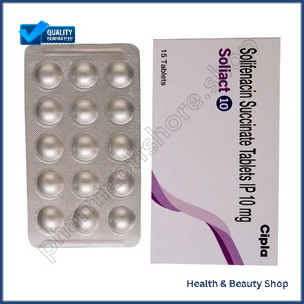
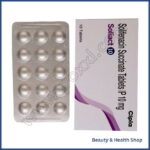
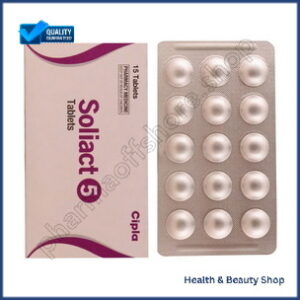

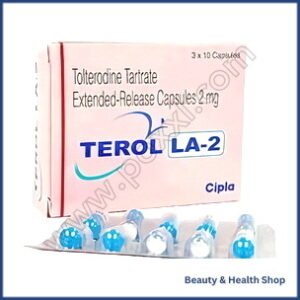
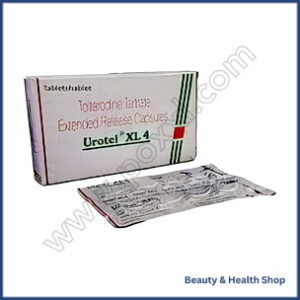
There are no reviews yet.